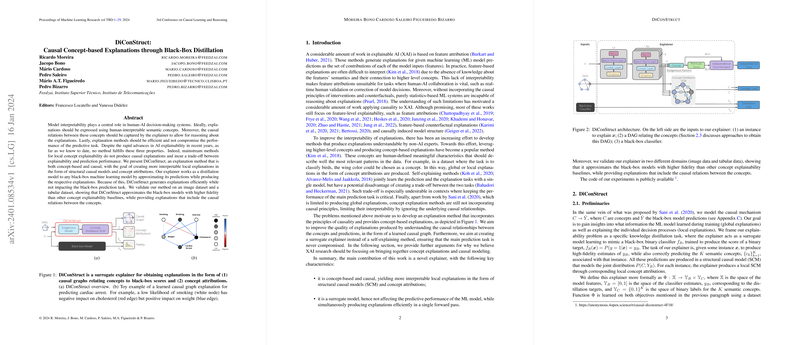Introduction to DiConStruct
The field of explainable AI (XAI) attempts to elucidate the machinations of complex ML systems by providing human-interpretable explanations for model predictions. A vital objective in this pursuit is to provide explanations that are both concept-based, hence semantically meaningful to humans, and causal, enabling rational discourse about the relationships between concepts.
Methodology of DiConStruct
The paper under discussion introduces DiConStruct, an explanation method that stands out by being concept-based and causal. It defines local explanations via structural causal models (SCM) and leverages concept attributions, effectively applying distillation techniques to approximate black-box ML models without degrading predictive performance. This method ensures explanatory efficiency by avoiding any impact on the predictive task. DiConStruct operates by constructing a surrogate model that is trained on a dataset labeled with human-defined concepts, which in turn requires a directed acyclic graph (DAG) reflecting the presumed causal relations among concepts and model outputs. The DAG can be obtained either through expert knowledge or causal discovery algorithms.
Performance and Validation
Validated using an image dataset and a tabular dataset, DiConStruct shows commendable fidelity in approximating the black-box models, surpassing several baseline models of concept explainability. It achieves this without the frequently witnessed trade-off between explainability and predictive performance. Notably, the explainer displays robust concept attribution diversity, crucial for ensuring the local relevance of its explanations.
Significance and Future Work
DiConStruct pushes the boundaries of XAI by introducing causality into concept-based explanations. The significance of marrying these properties lies in creating explanations that go beyond mere associations in the data to uncovering potential causal pathways. This leap is vital for contexts where understanding the causal underpinnings of model decisions is paramount, such as in regulated industries.
Future enhancements could involve extending to multi-class concepts, integrating latent variables for more comprehensive coverage, evaluating concept leakage, and contrasting DiConStruct's causal explanations with other explanatory frameworks. Although the explainer's performance is contingent on the completeness and relevance of the concept set, DiConStruct represents a significant stride in the field of XAI, advocating a method that is interpretable, causally informed, and operational at the local explanation level.
